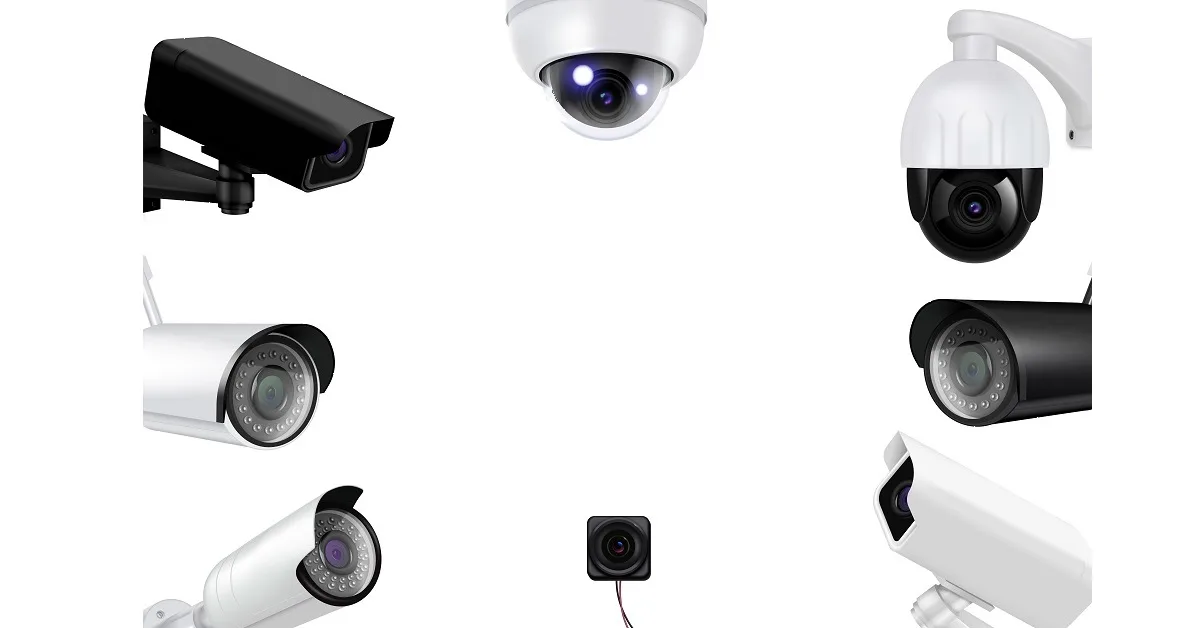Best Wireless Security Camera under 2000
Table of Contents
Understanding CCTV Cameras: A Comprehensive Guide
CCTV (Closed-Circuit Television) cameras are a widely used technology in the realm of security and surveillance. These cameras are designed to transmit video footage to a specific set of monitors or recording devices or your smartphones, allowing for real-time monitoring and recording of activities in a particular area. Let’s delve deeper into what CCTV cameras are, their types, how they work, and their various applications.
What Are CCTV Cameras?
CCTV cameras are video cameras used for the purpose of transmitting a signal to a specific, limited set of monitors. Unlike broadcast television, the signal is not openly transmitted, hence the term “closed-circuit.” These cameras are typically used for security and surveillance purposes, providing a way to monitor and record activities in a designated area.
What you should think about when searching among the Best Wireless Security Camera under 2000 Rs
When you think about the best wireless security camera to increase your home or business security, the decision can be hectic. To help you, we have mentioned several factors to consider to ensure you select the right model for your needs.
Here’s a list of things to keep in mind:
1. Camera Resolution:
Higher resolution cameras provide clearer images. Common resolutions include 720p, 1080p, 4K, etc.
2. Field of View (FOV)
Consider the camera’s viewing angle to determine how much area it can cover. A wider FOV covers more space but may have less detail per unit area.
3. Night Vision
Check if the camera has infrared (IR) LEDs or other night vision technologies to provide clear images in low-light conditions.
4. Weatherproofing (IP Rating)
For outdoor cameras, ensure they have a suitable IP rating (e.g., IP66 or IP67) to withstand various weather conditions.
5. Durability and Vandal Resistance
Look for cameras with robust housings that can withstand tampering or vandalism, often indicated by an IK rating.
6. Power Supply
Determine whether the camera requires a direct power connection, PoE (Power over Ethernet), or has a battery option.
7. Connectivity
Choose between wired and wireless options, depending on your installation preferences and network capabilities.
8. Storage Options
Consider local storage (microSD cards), cloud storage, or NVR/DVR compatibility for video recording.
9. Audio Capability
If you need to record audio, ensure the camera supports audio recording and has a built-in microphone.
10. Smart Features
Look for features like motion detection, facial recognition, AI-based analytics, and mobile app integration.
11. Installation and Placement
Consider ease of installation and whether the camera’s design fits the aesthetic of the location.
12. Budget
Determine your budget and find a camera that offers the best features within that range.
13. Brand and Warranty
Opt for reputable brands with good customer reviews and check the warranty period for added security.
14. Integration with Other Systems
Ensure compatibility with other security systems or home automation setups you might have.
15. Legal Considerations
Be aware of local laws and regulations regarding video surveillance, especially in public or shared spaces.
Types of CCTV Cameras that you should be aware of:
CCTV cameras come in various types, each suited for different applications and environments. We will go through different types of cameras one by one that includes their ‘details’, ‘Pros and Cons’, ‘Video’ and ‘link to buy’ altogether. Here are some of the most common types:
Type 1: Dome Camera
Dome cameras are named after their dome-shaped housing as you can see in the image. They are popular for their simple design and are commonly used in indoor environments like offices, retail stores, and homes. The dome shape makes it difficult for observers to determine which direction the camera is facing, providing a wider field of view.
Dome Cameras are commonly used in:
Casinos, Banks, Building Exteriors, Banks, Building Exteriors, Restaurants, Schools, Hotels, Manufacturing Sites, Gas Stations, Hospitals, Libraries
Best Dome CCTV Camera picked for you – IMOU 360° 1080P Full HD Security Camera
( Rated 4.1 out of 5 by 5978 Happy Customers )



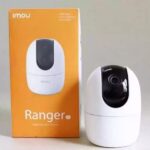

Overview
The IMOU 360° 1080P Full HD Security Camera is one of the Best Wireless Security Camera under 2000 rs. It is versatile and feature-rich security solution suitable for both residential and commercial use. It boasts a range of advanced features including human detection, motion tracking, two-way audio, night vision, and compatibility with Alexa and Google Assistant. The camera supports both WiFi and Ethernet connections and offers expandable storage with up to 256GB SD card support.
Design and Build Quality
The IMOU 360° Security Camera has a sleek and modern dome design that blends well with various interior decors. Its build quality is robust, featuring durable materials that ensure longevity. The dome construction not only adds to its aesthetic appeal but also provides a comprehensive 360° view, eliminating blind spots and enhancing security coverage.
Video Quality
With a resolution of 1080P Full HD, the IMOU camera delivers crisp and clear video footage. The high-definition video quality ensures that even minute details are captured, making it easier to identify faces and other important elements. The camera’s night vision capability further enhances its utility, providing clear images even in low-light conditions. The oldest Video will be deleted automatically when SD card is full.
Human Detection and Motion Tracking
One of the standout features of the IMOU Security Camera is its advanced human detection and motion tracking technology. The camera can differentiate between human movement and other motions, reducing false alarms caused by pets or moving objects. When human movement is detected, the camera automatically tracks and follows the person, ensuring continuous monitoring and recording.
Two-Way Audio
The two-way audio feature allows for real-time communication with people near the camera. This is particularly useful for interacting with family members, visitors, or even deterring potential intruders. The audio quality is clear, with minimal lag, facilitating effective communication.
Connectivity and Compatibility
The IMOU Security Camera offers flexible connectivity options, supporting both WiFi and Ethernet connections. This ensures stable and reliable performance, whether used in a home or office setting. Additionally, the camera is compatible with Alexa and Google Assistant, allowing for voice control and integration with smart home ecosystems.
Storage Options
The camera supports up to 256GB SD card storage, providing ample space for recording and storing video footage. This eliminates the need for cloud storage subscriptions, though the camera also offers cloud storage options for those who prefer it. The local storage feature is particularly advantageous for users concerned about privacy and data security.
Installation and Setup
Setting up the IMOU 360° Security Camera is straightforward and user-friendly. The camera comes with a detailed instruction manual, and the companion mobile app guides users through the installation process. The app is intuitive, offering easy access to live feeds, recorded videos, and various camera settings.
3-step super easy installation
1. Power On the camera
2. Scan QR code (bottom of camera) using IMOU Life App ( Android / IOS )
3. Click “Next” and connect your camera using WiFi
Performance
In terms of performance, this one of the Best Wireless Security Camera excels in delivering consistent and reliable security monitoring. The human detection and motion tracking features work seamlessly, ensuring that important events are captured and notified promptly. The video quality remains high across different lighting conditions, and the connectivity options ensure that the camera remains online and accessible.
Pros
- High-Definition Video Quality: 1080P Full HD resolution provides clear and detailed footage.
- Comprehensive Coverage: 360° view eliminates blind spots.
- Advanced Features: Human detection and motion tracking reduce false alarms and enhance security.
- Two-Way Audio: Facilitates real-time communication.
- Flexible Connectivity: Supports both WiFi and Ethernet connections.
- Smart Home Integration: Compatible with Alexa and Google Assistant.
- Ample Storage: Supports up to 256GB SD card storage.
Cons
- App Performance: Some users may experience occasional lag or glitches in the mobile app.
- Cloud Storage Costs: While optional, cloud storage subscriptions can add to the overall cost. Although, the SD card can be used as an alternative.
Technical Details
| Model | IMOU Ranger 2 |
| Installation | Wall / Ceiling / Table |
| Night Vision | Yes |
| Night Vision range | 10 meter |
| Human Detection | Yes |
| Sound Detection | Yes |
| Two Way Talk | Yes |
| Privacy Mode | Yes (stops recording) |
| WiFi / LAN | 2.4 GHz |
| Zoom Ratio | 16X |
| Lens | 3.6 mm / 1080 |
| Resolution | 1080p |
| Viewing Angle | 360 Degree |
| Light Source | Infrared |
| Video Format | MP4 |
| Material | Plastic |
| Product Dimension | 10.6 x 7.7 x 7.7 cm |
| Product Weight | 238 gram |
| Installation Level | Super Easy |
| Connecting App | IMOU Life App |
| Water-proof | Yes |
| SD card | Not available |
| SD Card Support | Up to 256 GB |
| Customer Support | Yes |
| Country of Origin | China |
Quick Guide on How to connect IMOU CCTV camera with App
What you will get in the box:
1 Camera, 1 Power Adapter, 1 Power Cable, 1 Mounting Plate, 1 Quick Service Guide, 3 sets of Screw Package, user manual.
Conclusion
The IMOU 360° 1080P Full HD Security Camera is a highly effective security solution, offering a range of advanced features that enhance safety and peace of mind. Its high-definition video quality, human detection, and motion tracking capabilities make it a reliable choice for both home and office use. The flexible connectivity options and smart home compatibility further add to its appeal. Despite minor drawbacks related to app performance and optional cloud storage costs, the camera delivers excellent value for money and robust security coverage.
Why you should buy Dome CCTV camera- See video
RECOMMENDED BY US
Type 2: Bullet Camera
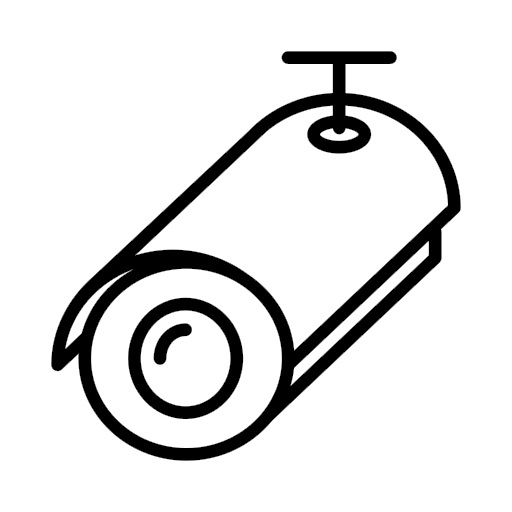
Bullet cameras have a long, cylindrical shape and are typically used for outdoor surveillance. They are weatherproof and often feature infrared (IR) LEDs for night vision. Bullet cameras are ideal for monitoring large areas like parking lots, backyards, and building exteriors.
Bullet Cameras are commonly used in:
Parking lots, backyards and building exteriors
Best Bullet CCTV Camera picked for you – TP-Link Tapo 3MP 1296p High Definition
TP-Link Tapo 3MP 1296p High Definition
( Rated 4.2 out of 5 by 17000 Happy Customers )
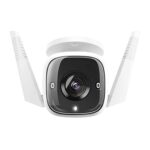
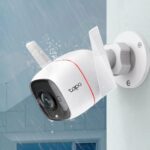
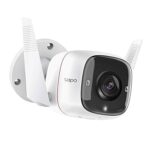

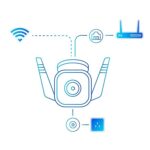
Overview
The TP-Link Tapo C310 is another best wireless security camera under 2000 rupees, that is a feature-rich outdoor CCTV security camera designed to provide robust surveillance and peace of mind. With its high-definition 3MP 1296p resolution, weatherproof design, night vision capabilities, and smart features like Alexa integration and two-way audio, the Tapo C310 offers a comprehensive security solution for homes and small businesses. This review will explore the key features, performance, and overall value of this smart camera.
Design and Build Quality
The Tapo C310 sports a sleek and sturdy design, crafted to withstand outdoor conditions. Its weatherproof rating (IP66) ensures that it can endure rain, dust, and other environmental factors, making it ideal for outdoor use. The camera’s white color and compact size allow it to blend seamlessly with various exteriors, while the adjustable mounting bracket offers flexible installation options. The overall build quality is impressive, with durable materials that promise longevity.
Video Quality
One of the standout features of the Tapo C310 is its high-definition 3MP 1296p video resolution. The camera delivers sharp and clear video footage, capturing intricate details that are crucial for identifying people and objects. The enhanced resolution surpasses standard 1080p cameras, providing superior image quality. Additionally, the camera’s wide-angle lens offers a broad field of view, ensuring comprehensive coverage of large areas.
Night Vision
The Tapo C310 is equipped with advanced night vision capabilities, featuring infrared LEDs that provide clear visibility up to 98 feet (30 meters) in complete darkness. This feature ensures that the camera continues to deliver reliable surveillance around the clock, capturing high-quality footage even in low-light conditions. The night vision is automatic, switching on as soon as it detects a lack of light, ensuring seamless monitoring without manual intervention.
Smart Features and Alexa Integration
The Tapo C310 is a smart camera that integrates seamlessly with smart home ecosystems. It is compatible with Amazon Alexa, allowing users to control the camera and view live feeds through voice commands. This integration enhances the convenience of monitoring, especially for those already invested in the Alexa ecosystem. The camera can also be accessed and controlled via the Tapo app, available on both iOS and Android platforms. The app offers a user-friendly interface with features like live streaming, playback, and notification settings.
Two way audio
The camera features a built-in microphone and speaker, enabling two-way audio communication. This feature is particularly useful for interacting with visitors, delivery personnel, or even deterring potential intruders. The audio quality is clear, with minimal distortion, making conversations natural and effective.
Motion Detection and Notifications
The Tapo C310 includes motion detection capabilities, which can be customized through the Tapo app. Users can set specific detection zones and sensitivity levels, minimizing false alarms triggered by non-threatening movements like swaying trees or passing vehicles. When motion is detected, the camera sends instant notifications to the user’s smartphone, allowing for prompt responses. The app also stores a record of detected events, which can be reviewed later.
Storage Options
The Tapo C310 offers flexible storage options. It supports local storage through a microSD card (up to 128GB), allowing users to store footage directly on the camera. This eliminates the need for cloud subscriptions and ensures data privacy. The camera also supports cloud storage, providing an alternative for those who prefer remote access and backup. However, cloud storage may involve additional costs.
Connectivity and Setup
The Tapo C310 supports both wired and wireless connectivity, offering versatility in installation. It can be connected to a Wi-Fi network for wireless operation or via an Ethernet cable for a more stable connection. The setup process is straightforward, with the Tapo app guiding users through each step. The app provides clear instructions for connecting the camera to the network, setting up features, and adjusting settings.
Performance
In terms of performance, the Tapo C310 excels in delivering consistent and reliable security monitoring. The high-resolution video quality, coupled with robust night vision, ensures clear footage in various lighting conditions. The motion detection and alert system are accurate and timely, providing users with immediate notifications of any suspicious activity. The camera’s two-way audio and smart features enhance its functionality, making it a versatile security solution.
Pros
- High-Resolution Video: 3MP 1296p resolution provides sharp and detailed footage.
- Weatherproof Design: IP66 rating ensures durability in outdoor conditions.
- Night Vision: Clear visibility up to 98 feet in complete darkness.
- Two-Way Audio: Enables communication with visitors or intruders.
- Smart Features: Alexa compatibility and easy app integration.
- Flexible Storage: Supports microSD card and cloud storage options.
- Easy Installation: User-friendly setup with both wired and wireless options.
- App Functionality: While user-friendly, the Tapo app could benefit from more advanced features and customization options.
Cons
- Weather Impact: This CCTV model may not provide clear images following exposure to adverse weather conditions.
- Cloud Storage Costs: While optional, cloud storage subscriptions can add to the overall cost. Although, the SD card can be used as an alternative.
- Low Viewing Angle: This model can’t rotate 360 degree. It has a maximum viewing angle of 104 degree, but they are made like this purposely.
Technical Details of TP-Link Tapo C310
| Model | Tapo C310 |
| Installation | Wall / Ceiling / Table |
| Night Vision | Yes |
| Night Vision range | 30 meter approx |
| Human Detection | Yes |
| Sound Detection | Yes |
| Built-in-light | Yes |
| Two Way Talk | Yes |
| Privacy Mode | Yes (stops recording) |
| WiFi / LAN | 2.4 GHz |
| Zoom Ratio | 3X |
| Resolution | 1296p |
| Viewing Angle | 104 Degree |
| Light Source | Infrared |
| Video Format | MP4 |
| Material | Plastic |
| Product Dimension | 9 x 18 x 20 cm |
| Product Weight | 480g |
| Installation Level | Medium |
| Connecting App | Tapo |
| Water-proof | Yes |
| SD card | Upto 128 GB |
| Customer Support | Yes |
| Country of Origin | India |
What you will get in the box:
Tapo C310, Power Adapter, Mounting Template, Anchors and Screws, Waterproof Seal, Waterproof Cable Attachments, Quick Start Guide
Conclusion
The TP-Link Tapo C310 is an excellent choice for those seeking a reliable and feature-packed outdoor security camera. Its high-resolution video quality, robust night vision, and weatherproof design make it suitable for various outdoor applications. The smart features, including Alexa integration and two-way audio, enhance its usability and convenience. While the optional cloud storage might add to the overall cost, the camera’s local storage option offers a cost-effective alternative. Overall, the Tapo C310 provides great value for money, offering comprehensive security and peace of mind.
Type 3: PTZ Camera
PTZ (Pan-Tilt-Zoom) cameras offer the ability to pan (move left and right), tilt (move up and down), and zoom in and out. These cameras are often used in situations requiring active surveillance, such as large retail stores, casinos, and public spaces. PTZ cameras can be remotely controlled to focus on specific areas or track moving objects.
Introduction and Features of PTZ Cameras
Introduction
Pan-Tilt-Zoom (PTZ) cameras are sophisticated surveillance devices widely used in various industries, from security and broadcasting to live events and wildlife observation. These cameras offer a range of functionalities that make them invaluable tools for monitoring large areas with flexibility and precision. PTZ cameras can remotely pan (move left or right), tilt (move up or down), and zoom in or out, allowing operators to adjust the camera’s field of view and focus on specific details. This versatility, combined with advanced imaging technologies, makes PTZ cameras ideal for dynamic environments where situational awareness and detailed observation are crucial.
Key Features of PTZ Cameras
Pan, Tilt, and Zoom (PTZ) Control
Pan: PTZ cameras can rotate horizontally, typically up to 360 degrees, allowing for a wide field of view. This feature is essential for covering extensive areas without the need for multiple cameras.
Tilt: The ability to move vertically enables these cameras to capture footage from different heights and angles, providing comprehensive coverage.
Zoom: PTZ cameras come equipped with optical and digital zoom capabilities. Optical zoom uses the camera’s lens to magnify the image without losing quality, while digital zoom enlarges the image digitally, potentially reducing clarity. This feature is particularly useful for focusing on distant objects or details.
High-Definition Imaging
PTZ cameras often support high-definition (HD) or even ultra-high-definition (4K) video resolution, ensuring clear and detailed footage. This quality is crucial for identifying faces, license plates, or other critical details.
Remote Control and Automation
These cameras can be controlled remotely through software or mobile apps, providing real-time access and control from anywhere. Many PTZ cameras also support automation features like preset positions, where the camera can automatically move to predetermined angles at specified times or when triggered by events like motion detection.
Motion Tracking and Detection
Advanced PTZ cameras can detect movement and automatically follow moving objects. This feature, known as auto-tracking, is invaluable for security purposes, as it allows continuous monitoring of a target without manual intervention.
Wide Dynamic Range (WDR) and Low-Light Performance
WDR technology helps PTZ cameras handle varying lighting conditions, ensuring clear footage in scenes with both bright and dark areas. Additionally, many PTZ cameras are equipped with infrared (IR) LEDs for night vision, enabling them to capture high-quality images in low-light or no-light conditions.
Weatherproof and Durable Design
PTZ cameras designed for outdoor use are typically weatherproof, with ratings like IP66 or IP67, indicating resistance to dust and water. This rugged construction ensures reliable operation in various environmental conditions, including rain, snow, and extreme temperatures.
Integration with Other Systems
PTZ cameras can integrate with other security systems, such as alarms, access control systems, and video management software (VMS). This integration allows for a cohesive security infrastructure, enabling centralized control and monitoring.
Audio Capabilities
Some PTZ cameras include built-in microphones and speakers, facilitating two-way audio communication. This feature is useful for interacting with visitors, issuing warnings, or providing instructions in real-time.
Flexible Mounting Options
PTZ cameras can be mounted in various ways, including ceiling, wall, and pole mounts, offering flexibility in installation. This adaptability ensures optimal coverage based on the specific needs of the environment.
Power over Ethernet (PoE)
Many modern PTZ cameras support PoE, which allows them to receive power and data through a single Ethernet cable. This feature simplifies installation by reducing the need for separate power sources and cables.
Applications of PTZ Cameras
PTZ cameras are widely used in various settings, including:
- Security and Surveillance: For monitoring public spaces, commercial properties, and residential areas.
- Broadcasting: In live sports, news, and entertainment broadcasting, where dynamic camera movements are required.
- Events and Conferences: For capturing wide shots and close-ups in large venues.
- Wildlife Observation: In remote areas, where capturing detailed footage of animals is necessary.
Conclusion
PTZ cameras offer unparalleled versatility and functionality, making them a popular choice for a wide range of applications. Their ability to pan, tilt, and zoom, coupled with advanced imaging technologies and remote control capabilities, provide comprehensive monitoring and surveillance solutions. Whether for security, broadcasting, or live events, PTZ cameras deliver high-quality, reliable performance, ensuring users have the best possible tools to meet their needs.
What you will get in the box:
1 Camera, 1 Quick Start Guide, 1 Mounting Template, 1 Mounting Bracket, 1 Power Adapter, 1 Waterproof Connector, 1 Screw and Anchor pack
How Do CCTV Cameras Work?
CCTV cameras operate by capturing video footage and transmitting it to a monitor or recording device. Here’s a basic overview of how they work:
Image Capture
The camera’s lens captures light and directs it onto an image sensor, usually a CCD (Charge-Coupled Device) or CMOS (Complementary Metal-Oxide-Semiconductor) sensor. These sensors convert the light into electrical signals.
Signal Processing
The electrical signals are processed by the camera’s internal circuitry to produce a video signal. This signal can be analog or digital, depending on the type of camera.
Transmission
The video signal is transmitted to a monitor or recording device. In analog systems, the signal is sent via coaxial cables, while in digital systems (like IP cameras), it is transmitted over network cables or wirelessly.
Recording and Storage
The video footage can be recorded and stored on various media, such as DVRs (Digital Video Recorders), NVRs (Network Video Recorders), or cloud storage. Recorded footage can be reviewed later for evidence or analysis.
Remote Access
Many modern CCTV systems offer remote access via smartphones, tablets, or computers. This allows users to view live footage, receive alerts, and control the cameras from anywhere with an internet connection.
Applications of CCTV Cameras
CCTV cameras have a wide range of applications across various sectors. Here are some of the most common uses:
1. Home Security
Homeowners use CCTV cameras to monitor their property and deter potential intruders. Cameras are placed at entry points, driveways, and other vulnerable areas to enhance security and provide peace of mind.
2. Business Security
Businesses use CCTV cameras to protect their premises, monitor employee activity, and prevent theft and vandalism. Cameras are often installed in retail stores, offices, warehouses, and other commercial spaces.
3. Public Safety
Government agencies and municipalities use CCTV cameras to monitor public spaces, such as streets, parks, and transportation hubs. These cameras help enhance public safety, manage traffic, and deter criminal activity.
4. Industrial Surveillance
Industries use CCTV cameras to monitor production processes, ensure workplace safety, and prevent unauthorized access to sensitive areas. Cameras are often installed in factories, warehouses, and construction sites.
5. Healthcare Facilities
Hospitals and healthcare facilities use CCTV cameras to ensure the safety of patients, staff, and visitors. Cameras are placed in critical areas like entrances, emergency rooms, and corridors to monitor activity and respond quickly to incidents.
6. Educational Institutions
Schools and universities use CCTV cameras to enhance campus security, monitor student behavior, and prevent vandalism. Cameras are installed in hallways, classrooms, and common areas to ensure a safe learning environment.
The Importance and Ease of Installing CCTV Security Cameras
In today’s world, ensuring the security of our homes and businesses has become a top priority. One of the most effective ways to achieve this is by installing CCTV (Closed-Circuit Television) security cameras. These cameras offer numerous benefits, from deterring crime to providing peace of mind. Additionally, modern advancements have made installing these systems easier than ever before. In this blog post, we’ll explore why CCTV security cameras are essential and how straightforward the installation process can be.
Why CCTV Security Cameras are Essential
1. Crime Deterrence
The presence of CCTV cameras is a powerful deterrent to criminals. Potential intruders are less likely to target a property if they know they are being watched. The mere sight of cameras can make them think twice, reducing the likelihood of criminal activity. This preventive measure is invaluable in safeguarding both residential and commercial properties.
2. Evidence Collection
In the unfortunate event of a crime, CCTV cameras provide crucial evidence. High-definition video recordings can capture clear images of perpetrators, helping law enforcement identify and apprehend them. This evidence can also be used in court, increasing the chances of a successful prosecution.
3. Remote Monitoring
Modern CCTV systems allow for remote monitoring via smartphones, tablets, or computers. This means you can keep an eye on your property from anywhere in the world, provided you have an internet connection. Whether you’re on vacation or at work, you can always stay connected to your security system.
4. Enhanced Safety
CCTV cameras enhance safety by monitoring activities around your property. They can be strategically placed to cover entry points, driveways, and other vulnerable areas. This constant surveillance helps prevent accidents, such as slip-and-fall incidents, and can alert you to any suspicious behavior or unauthorized access.
5. Insurance Benefits
Many insurance companies offer discounts on premiums for properties equipped with CCTV systems. The presence of security cameras reduces the risk of theft and vandalism, which in turn lowers the likelihood of filing a claim. This cost-saving benefit is an added incentive for investing in a reliable CCTV system.
6. Employee Monitoring
For business owners, CCTV cameras are an effective tool for monitoring employee behavior and ensuring adherence to company policies. They can help identify any unethical or illegal activities, such as theft or misconduct, fostering a safer and more productive work environment.
7. Peace of Mind
Perhaps the most significant benefit of CCTV cameras is the peace of mind they provide. Knowing that your property is under constant surveillance gives you a sense of security and allows you to focus on other aspects of your life or business without constant worry.
The Ease of Installing CCTV Security Cameras
One of the reasons some people hesitate to install CCTV cameras is the misconception that the installation process is complicated and time-consuming. However, advancements in technology have made setting up these systems more accessible than ever before. Let’s break down the installation process to show just how straightforward it can be.
1. Planning and Choosing the Right System
The first step in installing a CCTV system is planning. Determine the areas you want to monitor and the number of cameras needed. Consider factors such as lighting, field of view, and camera type (e.g., dome, bullet, or PTZ cameras). Once you have a clear plan, choose a system that fits your requirements and budget. Many CCTV systems come as kits, including cameras, cables, and recording devices, making the selection process easier.
2. Gathering the Necessary Tools and Equipment
Before you begin the installation, gather the necessary tools and equipment. This typically includes:
- Drill and drill bits
- Screwdrivers
- Screws and anchors
- Cables (if using wired cameras)
- Power adapters (if needed)
- Ladder (for high installation points)
- Cable clips or conduits (for cable management)
Having everything ready beforehand will streamline the installation process.
3. Installing the Cameras
Now that you have your plan and equipment, it’s time to install the cameras. Follow these general steps:
- Mounting the Cameras: Use the drill to create holes for the mounting brackets. Secure the brackets with screws and anchors, ensuring they are stable and level.
- Positioning the Cameras: Adjust the cameras to cover the desired areas. Ensure they are positioned at an appropriate height to capture clear images while avoiding obstructions.
- Connecting the Cables: If using wired cameras, connect the cables to the cameras and run them to the recording device. Use cable clips or conduits to manage and conceal the cables, creating a neat and professional appearance.
- Powering the Cameras: Plug the cameras into power outlets using the provided adapters. If using battery-powered cameras, ensure the batteries are fully charged.
4. Setting Up the Recording Device
Most CCTV systems include a recording device, such as a DVR (Digital Video Recorder) or NVR (Network Video Recorder). Follow these steps to set it up:
- Connecting the Cameras: Connect the camera cables to the recording device. For wireless cameras, follow the manufacturer’s instructions to pair them with the recorder.
- Connecting to a Monitor: Connect the recording device to a monitor or TV using HDMI or VGA cables. This allows you to view live footage and access the system’s settings.
- Configuring the System: Power on the recording device and follow the on-screen prompts to configure the system. This typically includes setting up recording schedules, motion detection zones, and remote access options.
5. Testing and Adjusting
Once the cameras and recording device are set up, test the system to ensure everything is working correctly. Check the live feed from each camera to verify the positioning and adjust as needed. Test the motion detection and recording features to ensure they are functioning as expected.
6. Securing Remote Access
To enable remote monitoring, connect the recording device to your internet router using an Ethernet cable. Follow the manufacturer’s instructions to set up remote access via a mobile app or web portal. This step allows you to view live footage and receive alerts on your smartphone or computer.
7. Maintaining the System
After installation, regular maintenance is essential to ensure the system continues to function optimally. This includes:
- Cleaning the Cameras: Periodically clean the camera lenses to remove dust and debris that could affect image quality.
- Checking the Connections: Inspect the cables and connectors to ensure they are secure and free from damage.
- Updating the Firmware: Check for firmware updates from the manufacturer and apply them to keep the system up-to-date with the latest features and security enhancements.
Conclusion
CCTV security cameras are an invaluable tool for enhancing the security of your property. They deter crime, provide crucial evidence, and offer peace of mind. With modern advancements, installing these systems has become easier than ever before. By following a few straightforward steps, you can set up a comprehensive CCTV system that safeguards your home or business. Don’t let misconceptions about complexity hold you back—invest in a CCTV security system today and enjoy the benefits of enhanced security and peace of mind.
Disclaimer: The links mentioned are affiliate links. We may earn a commission if you purchase the product through this link. This will not affect the price you pay.

